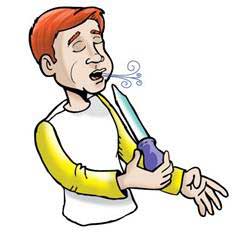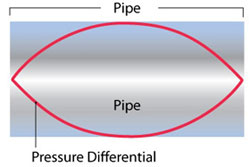Physics in the Kitchen: The Musical Turkey Baster

In the kitchen there are plenty of gadgets that illustrate numerous laws and theories of physics, but none are music to my ears like the musical turkey baster.
What you Need
- a turkey baster
- water
- electrical tape
- food coloring (optional)
What to Do
- Remove the bulb from the turkey baster and wrap the wide end of the baster where the bulb was removed with electrical tape. The tape will act as a gasket.
- Replace the bulb over the electrical tape.
- Squeeze the bulb of the turkey baster and dip it in a bowl of water.
- Release the bulb and let the water get sucked into the turkey baster.
- Turn the turkey baster upside down, letting the water rush into the bulb.
- Repeat steps 1-3 until the bulb is full of water.
- Add a couple drops of food coloring, place your finger over the open end and shake (optional)
- Blow over the open tip of the turkey baster like it is a bottle, jug or flute and squeeze the bulb to change the sound.
What's Going On?
Sound is made up compression waves traveling through matter. In this experiment air molecules are being compressed, pushed together, at regular intervals, meaning there is an even amount of time between each compression of air. The air gets compressed because of an object vibrating. Think about when you wave your hand in front of your face, you can feel the air moving. If you moved your hand back and forth at least 15 times per second (15 Hz) you would be able to hear it, but that is really fast!

Figure 1. Standing Wave
If you were running a race in gym class, one where you only had to run to half court and back while your opponent had to run the full court and back, the distance you'd have to run would be shorter than your opponent . Also, if you were to repeat this run, you would go back and forth more often than your opponent and would therefore have a higher frequency of running back and forth. If you think about the compressions of air as the runners and think of the chamber as the basketball court, the compression that goes a shorter distance would have a higher frequency. When you shorten the chamber, by squeezing the bulb and raising the water level, you create a higher frequency standing wave, which we hear as a higher pitch or a higher sound.

This is how many simple wind instruments such as the recorder and flute work, but instead of changing the length of the chamber by raising the water level, these instruments change the chamber length by covering holes. The more consecutive holes you have closed, the longer chamber will be and the lower the pitch.
Try This!
- Try squeezing the bulb to change the water level. Can you make a low pitched sound? Can you make a high pitched sound?
- Try changing the water level while you blow continuously against the open edge. Does it make any difference?
- Try to play "Happy Birthday" or "Mary Had a Little Lamb."
- Try blowing against the edge of other cylindrical containers. Does the size of the container or the material that the container is made out of influence the sound?
More Information











